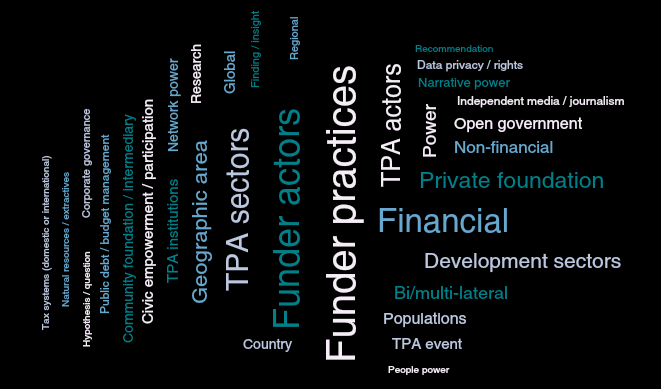
The Big Picture
After launching our new 2020-2024 strategy earlier this year, we wanted to make sure our learning efforts considered the uncharted realities brought about by the COVID-19 pandemic. Yet, with the “waterfall” of information on coronavirus from a myriad of sources, it was getting harder to navigate, combine, and sense make the emerging data, messages, and research. This prompted us to develop a limited series learning product – COVID-19 Monitor.
Transparency and Accountability Initiative’s (TAI) COVID-19 Monitor is a brief newspaper-style slide deck with synthesis and analysis of transparency, civic participation, and accountability (TPA) relevant content we are reading. It draws on funder responses to COVID-19, governance data tracking tools, and knowledge products from practitioners. Each issue of the COVID-19 Monitor explores a particular theme. We are pleased to announce the release of the first issue focusing on data tools that track developments around TPA-related issues globally.
The Nitty Gritty
Creating the COVID-19 Monitor proved to be an exciting, yet demanding, exercise with a steep learning curve for all involved. Here is a brief overview of some of the “behind the scenes” challenges we have encountered so far and how we have tackled them.
Content sourcing: We got a lot of content to “swim” through! It was a multi-step endeavor and a non-stop process. We used three criteria to filter all items we found (read more about these criteria here). After that, we organized and uploaded the content on a qualitative coding software platform where all the magic began.
What we’ve learned: We won’t capture all relevant content, but having two or more pairs of eyes sourcing and reviewing pieces helps to ensure we are considering a more diverse and inclusive pool of information, research, and opinions. The team effort also helps to strengthen quality of the content for analysis (i.e., consistent filtering and checking for duplicates).
Coding and analysis: Thankfully, we didn’t need to learn any Java or C++, but we did need to master Dedoose, the software we use to conduct qualitative coding and analysis. Curious to see what these codes are? Check them out here. After coding, we analyzed the frequency and patterns of these codes and the qualitative data behind them to systematize the messages we are hearing.
What we’ve learned: The TPA field is broad and diverse, but for qualitative research, clarity of code definitions, coding protocol, and overall purpose are essential for meaningful analysis. We had to refine our codes taking into consideration the distinct strategic lenses of our funder members and their partners.
Interpretation and sense-making: After we completed the analysis and saw transpiring patterns in our codes, we reflected on what this means and why it is relevant to our work and the TPA field in general. We based our reflections on a set of learning questions related to TAI’s strategy and adapted for each COVID-19 Monitor issue theme.
What we’ve learned: Qualitative analysis calls for meticulous attention to detail, and interpretation requires an iterative process. We needed to probe into the emergent code patterns to understand what we were and were not hearing, what threats and opportunities for TPA goals and sectors the messages we were/not hearing pose, and how TAI members and other funders might use the findings. We expect to continue learning how best to apply an “adaptive” mindset to this research so that we can move between a set research plan and being responsive to new information and questions.
A crisis, like the pandemic, comes with many challenges and a strong need for learning conversations and collaborative action within and beyond institutional boundaries. As a collaborative of funders, TAI’s “bird’s eye view” positioning offers an encompassing perspective on threats and opportunities for funders and practitioners pursuing TPA outcomes. We created the COVID-19 Monitor to help TAI members, other funders, and practitioners to decipher evidence and trends in the overwhelming volumes of information available. We hope the Monitor will enable a structured space for collaborative exploration of mid-and longer-term threats and opportunities in advancing the TPA agenda during the pandemic and beyond.


